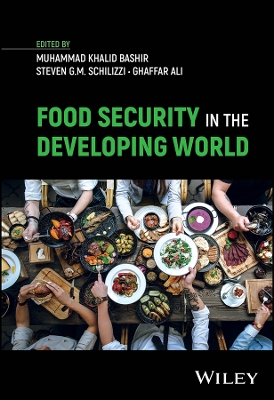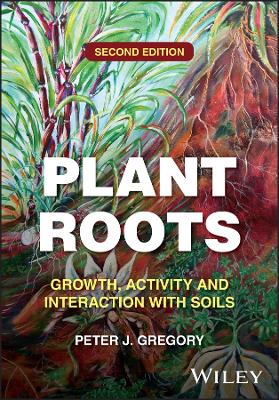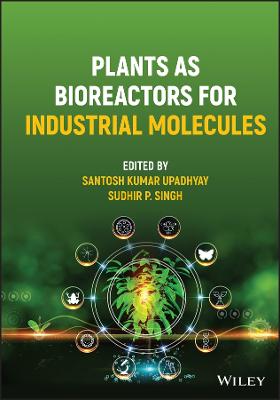Food Security in the Developing World
 -15%
portes grátis
-15%
portes grátis
Food Security in the Developing World
Ali, Ghaffar; Schilizzi, Steven G. M.; Bashir, Muhammad Khalid
John Wiley & Sons Inc
03/2024
256
Dura
Inglês
9781119265108
15 a 20 dias
Descrição não disponível.
About the Editors xi
List of Contributors xv
Preface xix
1 Introduction to the Issue: Food Security 1
Muhammad Khalid Bashir, Steven G.M. Schilizzi, and Muhammad Umar Farrukh
References 5
2 Food Availability: Stock Maintenance Policies 7
Farhad Zulfiqar, Raza Ullah, and Muhammad Asif Kamran
2.1 Food Security and Food Availability 7
2.2 Food Availability 8
2.2.1 Food Availability Status 9
2.2.2 Demand and Supply-Case Studies from Asia and Sub-Saharan Africa 9
2.2.3 Sufficiency of Supply 12
2.2.4 Sufficiency of Supply and Agricultural Infrastructure 13
2.2.5 Food Stocks 14
2.3 Stock Maintenance Policies 15
2.3.1 Indian Case Study 16
2.3.2 Bangladesh Case Study 18
2.3.3 Pakistan Case Study 18
2.3.4 Chinese Case Study 20
2.4 Conclusions 21
References 22
3 Postharvest Losses as a Factor of Food Insecurity: The Case of Fruit and Vegetables in Pakistan 25
Muhammad Hamid Bashir and Sabyan Faris Honey
3.1 Introduction 25
3.2 The Horticulture Sector and Its Implications for Developing Countries 26
3.3 The Horticulture Sector in Pakistan 28
3.4 Fresh Produce Industry Analysis (2005-2015) 32
3.4.1 Area and Production (Fruits) 32
3.4.2 Area and Production (Vegetables) 32
3.5 Constraints on Production and Postharvest Management 34
3.6 Postharvest Losses 34
3.7 Factors Responsible for Postharvest Losses 35
3.7.1 Internal Factors 35
3.7.2 External Factors 37
3.8 Strategies to Reduce PHLs in Fruits and Vegetables 38
3.9 Recent Advances in Postharvest Technology 39
3.9.1 Breeding and Provision of Raw Material 39
3.9.2 Cold Supply Chain System 40
3.9.3 Processing Units 40
3.9.4 Development of Marketing Strategies to Address PHLs 40
References 43
4 Climate Change and Agricultural Productivity 45
Ghaffar Ali
4.1 Impacts of Climate Change on Food Security in Developing Countries 45
4.2 Case Studies 50
4.2.1 Climate Change and Food Security: Case Study of China 52
4.2.2 Climate Change, Natural Environment, and the People of Myanmar 58
4.2.2.1 Background 58
4.2.2.2 Climate Change and Myanmar, A Societal Perspective 59
4.2.2.3 Concluding Remarks 61
4.2.3 Social Vulnerability to Climate Change in Urban India 62
4.2.3.1 Background 62
4.2.3.2 Natural Calamities and Adaptability 63
4.2.3.3 Exposure 64
4.2.3.4 Sensitivity 67
4.2.3.5 Adaptability 70
4.2.3.6 Vulnerability 73
4.2.3.7 Concluding Remarks 76
4.2.4 Climate Change Impacts on Agriculture-related Food Security in Pakistan 76
4.2.4.1 Background 76
4.2.4.2 Climate Change, Floods, and Food Insecurity 78
4.2.4.3 What Is Next? 81
4.2.4.4 Concluding Remarks 82
4.2.5 Climate Change and Vulnerability to Agriculture System: Case of Thailand 83
4.2.5.1 Background 83
4.2.5.2 Relationship Between Climate Change and Floods in Thailand 84
4.2.5.3 Flood Impacts on Agriculture of the Country 84
4.2.5.4 Flood Victims and Relevant Public Sector (Responses) 87
4.2.5.5 Concluding Remarks 88
4.3 Conclusions 88
Acknowledgment 89
References 90
5 Agricultural Revolutions and Food Security 95
Tahira Sadaf, Sana Sehar, and Sarfraz Hassan
5.1 Background 95
5.2 Agricultural Revolutions: Historical Perspective 96
5.3 The Green Revolution 98
5.3.1 The Green Revolution: Background 98
5.3.2 Benefits of the Green Revolution 99
5.3.2.1 Increase in Production and Export of Food Cereals 100
5.3.2.2 Poverty Reduction 100
5.3.2.3 Rise in Public Investments 101
5.3.3 Drawbacks of the Green Revolution 101
5.3.3.1 Challenge of Reduction of Rural Poverty and Income Inequality 101
5.3.3.2 Gender Inequality 102
5.3.3.3 Environmental Hazards 102
5.3.3.4 Land Degradation 103
5.3.3.5 Water Issues 103
5.3.3.6 Other Issues 103
5.3.4 Post-Green Revolution Situation 103
5.4 The White Revolution 105
5.4.1 Indian White Revolution: Operation Flood 106
5.4.1.1 Merits and Demerits of the Indian White Revolution 107
5.4.2 Pakistani White Revolution: Doodh Darya (The River of Milk) 107
5.4.2.1 Challenges Associated with Pakistani Dairy Industry 111
5.4.2.2 Way Forward for "Doodh Darya" 113
5.4.3 Brazilian Experience of Dairying 115
5.5 Conclusions 117
References 119
6 Dynamics of Income and Income Redistribution in Developing Countries 123
Rakhshanda Kousar, Muhammad Sohail Amjad Makhdum, and Khalid Mushtaq
6.1 Historical Background 123
6.2 Concept and Measures of Income Distribution 125
6.2.1 Lorenz Curve 125
6.2.2 Gini Index 127
6.2.3 Gini Concentration Ratio 127
6.3 Global Trends of Income Distribution 128
6.4 Concept and Need of Income Redistribution 128
6.5 Different Redistribution Methods 130
6.5.1 Cash Transfers 130
6.5.2 Negative Income Tax 133
6.6 Case Studies of Developing Countries 134
6.6.1 Cash Transfers and Redistribution in Latin America 134
6.6.2 Redistribution in OECD Countries 135
6.7 Linkage Between Income Distribution and Food Security 136
6.8 Conclusion 140
References 140
7 Market Availability 143
Hammad Badar, Burhan Ahmad, and Muhammad Hafeez
7.1 Introduction 143
7.2 Markets and Their Functions 145
7.2.1 Exchange Function 145
7.2.2 Price Determination 146
7.2.3 Resource Allocation 146
7.2.4 Policy Implementation 146
7.2.5 Value Addition 147
7.2.6 Employment Generation 147
7.3 Stakeholders in Agricultural Markets 147
7.3.1 Producers 148
7.3.2 Consumers 148
7.3.3 Traders 148
7.3.4 Trade Supporters 149
7.3.5 Trade Planners/Decision-Makers 149
7.4 Agricultural Marketing Systems in Developing Countries 149
7.5 Market Availability Options for Producers 151
7.5.1 Direct Marketing 152
7.5.2 Indirect Marketing 152
7.5.2.1 Secondary or Terminal Markets 152
7.5.2.2 Primary or Local Markets 153
7.5.2.3 Processors/Exporters/Retailers 153
7.5.2.4 Cooperatives 153
7.6 Markets Available to Consumers 154
7.6.1 Traditional Retail Markets 154
7.6.2 Modern Retail Markets 154
7.6.3 Problems of Markets in Developing Countries 155
7.6.4 Inequitable Returns 155
7.6.5 Predominance of Intermediaries 155
7.6.6 Problem of Transportation 156
7.6.7 Inadequate Storage and Warehousing Facilities 156
7.6.8 Lack of Credit 156
7.6.9 Lack of Modern Marketing Knowledge 157
7.6.10 Outdated Measuring Equipment 157
7.6.11 Lack of Technical Knowledge 157
7.6.12 Lack of Organized Markets 158
7.7 Policy Measures for Improved Market Availability 158
7.7.1 Entrepreneurial Mindset 158
7.7.2 Market Governance 159
7.7.3 Institutional Innovations 159
7.7.4 Diversification 160
7.7.5 Standards and Certification Culture 160
7.7.6 Use of ICT 161
7.8 Conclusion 161
References 162
8 Price Volatility and Food Security: Measurement and Implications 165
Burhan Ahmad, Hammad Badar, Ole Gjolberg, and Mubashir Mehdi
8.1 Introduction 165
8.2 Implications of Food Price Volatility 168
8.2.1 Price Volatility and Decision-Making by Stakeholders 168
8.2.2 Price Volatility and Market Integration 169
8.2.3 Price Volatility and Food Security 171
8.3 Measuring Price Volatility 173
8.3.1 Unconditional Price Volatility 174
8.3.2 Conditional Price Volatility 174
8.3.3 Price Volatility: A Case of Rice Sector in Pakistan 176
8.3.4 Salient Features of Regional Rice Prices Volatility 177
8.4 Conclusion 182
References 183
9 Food Security, Food Safety, and Sanitation 191
Mian Kamran Sharif, Kainat Sarwar, Namrah Abid, and Muhammad Abid Bashir
9.1 Introduction 191
9.2 What Is Food Safety? 192
9.3 Impact of Food Safety on Food Security 192
9.4 Major Problems and Challenges in Food Safety 193
9.4.1 Food Hygiene 194
9.4.2 Impact of Climate Change 194
9.4.3 Kitchen and Equipment Sanitation 196
9.4.4 Personal Hygiene of Food Handlers 197
9.4.5 Globalization in Food Industry 197
9.4.6 Food Adulteration 198
9.4.7 Misuse of Food Additives 199
9.4.8 Use of Products past Their Expiry Dates 200
9.5 Food Safety at Different Stages 200
9.5.1 Food Safety at Production Stage 200
9.5.2 Food Safety at Processing and Packaging Stage 202
9.5.3 Food Safety at Transport and Distribution Stage 203
9.5.4 Food Safety at Consumption Stage 203
9.6 Sanitation and Personal Hygiene 204
9.6.1 Sanitation 204
9.6.2 Personal Hygiene 206
9.7 World Condition of Sanitation 207
9.8 Foodborne Illness 209
9.9 Sanitation at Industrial Level 210
9.10 Sanitation at Household Level 213
9.11 The Impact of Sanitation on Food Security 215
9.12 Conclusion 216
References 217
Index 227
List of Contributors xv
Preface xix
1 Introduction to the Issue: Food Security 1
Muhammad Khalid Bashir, Steven G.M. Schilizzi, and Muhammad Umar Farrukh
References 5
2 Food Availability: Stock Maintenance Policies 7
Farhad Zulfiqar, Raza Ullah, and Muhammad Asif Kamran
2.1 Food Security and Food Availability 7
2.2 Food Availability 8
2.2.1 Food Availability Status 9
2.2.2 Demand and Supply-Case Studies from Asia and Sub-Saharan Africa 9
2.2.3 Sufficiency of Supply 12
2.2.4 Sufficiency of Supply and Agricultural Infrastructure 13
2.2.5 Food Stocks 14
2.3 Stock Maintenance Policies 15
2.3.1 Indian Case Study 16
2.3.2 Bangladesh Case Study 18
2.3.3 Pakistan Case Study 18
2.3.4 Chinese Case Study 20
2.4 Conclusions 21
References 22
3 Postharvest Losses as a Factor of Food Insecurity: The Case of Fruit and Vegetables in Pakistan 25
Muhammad Hamid Bashir and Sabyan Faris Honey
3.1 Introduction 25
3.2 The Horticulture Sector and Its Implications for Developing Countries 26
3.3 The Horticulture Sector in Pakistan 28
3.4 Fresh Produce Industry Analysis (2005-2015) 32
3.4.1 Area and Production (Fruits) 32
3.4.2 Area and Production (Vegetables) 32
3.5 Constraints on Production and Postharvest Management 34
3.6 Postharvest Losses 34
3.7 Factors Responsible for Postharvest Losses 35
3.7.1 Internal Factors 35
3.7.2 External Factors 37
3.8 Strategies to Reduce PHLs in Fruits and Vegetables 38
3.9 Recent Advances in Postharvest Technology 39
3.9.1 Breeding and Provision of Raw Material 39
3.9.2 Cold Supply Chain System 40
3.9.3 Processing Units 40
3.9.4 Development of Marketing Strategies to Address PHLs 40
References 43
4 Climate Change and Agricultural Productivity 45
Ghaffar Ali
4.1 Impacts of Climate Change on Food Security in Developing Countries 45
4.2 Case Studies 50
4.2.1 Climate Change and Food Security: Case Study of China 52
4.2.2 Climate Change, Natural Environment, and the People of Myanmar 58
4.2.2.1 Background 58
4.2.2.2 Climate Change and Myanmar, A Societal Perspective 59
4.2.2.3 Concluding Remarks 61
4.2.3 Social Vulnerability to Climate Change in Urban India 62
4.2.3.1 Background 62
4.2.3.2 Natural Calamities and Adaptability 63
4.2.3.3 Exposure 64
4.2.3.4 Sensitivity 67
4.2.3.5 Adaptability 70
4.2.3.6 Vulnerability 73
4.2.3.7 Concluding Remarks 76
4.2.4 Climate Change Impacts on Agriculture-related Food Security in Pakistan 76
4.2.4.1 Background 76
4.2.4.2 Climate Change, Floods, and Food Insecurity 78
4.2.4.3 What Is Next? 81
4.2.4.4 Concluding Remarks 82
4.2.5 Climate Change and Vulnerability to Agriculture System: Case of Thailand 83
4.2.5.1 Background 83
4.2.5.2 Relationship Between Climate Change and Floods in Thailand 84
4.2.5.3 Flood Impacts on Agriculture of the Country 84
4.2.5.4 Flood Victims and Relevant Public Sector (Responses) 87
4.2.5.5 Concluding Remarks 88
4.3 Conclusions 88
Acknowledgment 89
References 90
5 Agricultural Revolutions and Food Security 95
Tahira Sadaf, Sana Sehar, and Sarfraz Hassan
5.1 Background 95
5.2 Agricultural Revolutions: Historical Perspective 96
5.3 The Green Revolution 98
5.3.1 The Green Revolution: Background 98
5.3.2 Benefits of the Green Revolution 99
5.3.2.1 Increase in Production and Export of Food Cereals 100
5.3.2.2 Poverty Reduction 100
5.3.2.3 Rise in Public Investments 101
5.3.3 Drawbacks of the Green Revolution 101
5.3.3.1 Challenge of Reduction of Rural Poverty and Income Inequality 101
5.3.3.2 Gender Inequality 102
5.3.3.3 Environmental Hazards 102
5.3.3.4 Land Degradation 103
5.3.3.5 Water Issues 103
5.3.3.6 Other Issues 103
5.3.4 Post-Green Revolution Situation 103
5.4 The White Revolution 105
5.4.1 Indian White Revolution: Operation Flood 106
5.4.1.1 Merits and Demerits of the Indian White Revolution 107
5.4.2 Pakistani White Revolution: Doodh Darya (The River of Milk) 107
5.4.2.1 Challenges Associated with Pakistani Dairy Industry 111
5.4.2.2 Way Forward for "Doodh Darya" 113
5.4.3 Brazilian Experience of Dairying 115
5.5 Conclusions 117
References 119
6 Dynamics of Income and Income Redistribution in Developing Countries 123
Rakhshanda Kousar, Muhammad Sohail Amjad Makhdum, and Khalid Mushtaq
6.1 Historical Background 123
6.2 Concept and Measures of Income Distribution 125
6.2.1 Lorenz Curve 125
6.2.2 Gini Index 127
6.2.3 Gini Concentration Ratio 127
6.3 Global Trends of Income Distribution 128
6.4 Concept and Need of Income Redistribution 128
6.5 Different Redistribution Methods 130
6.5.1 Cash Transfers 130
6.5.2 Negative Income Tax 133
6.6 Case Studies of Developing Countries 134
6.6.1 Cash Transfers and Redistribution in Latin America 134
6.6.2 Redistribution in OECD Countries 135
6.7 Linkage Between Income Distribution and Food Security 136
6.8 Conclusion 140
References 140
7 Market Availability 143
Hammad Badar, Burhan Ahmad, and Muhammad Hafeez
7.1 Introduction 143
7.2 Markets and Their Functions 145
7.2.1 Exchange Function 145
7.2.2 Price Determination 146
7.2.3 Resource Allocation 146
7.2.4 Policy Implementation 146
7.2.5 Value Addition 147
7.2.6 Employment Generation 147
7.3 Stakeholders in Agricultural Markets 147
7.3.1 Producers 148
7.3.2 Consumers 148
7.3.3 Traders 148
7.3.4 Trade Supporters 149
7.3.5 Trade Planners/Decision-Makers 149
7.4 Agricultural Marketing Systems in Developing Countries 149
7.5 Market Availability Options for Producers 151
7.5.1 Direct Marketing 152
7.5.2 Indirect Marketing 152
7.5.2.1 Secondary or Terminal Markets 152
7.5.2.2 Primary or Local Markets 153
7.5.2.3 Processors/Exporters/Retailers 153
7.5.2.4 Cooperatives 153
7.6 Markets Available to Consumers 154
7.6.1 Traditional Retail Markets 154
7.6.2 Modern Retail Markets 154
7.6.3 Problems of Markets in Developing Countries 155
7.6.4 Inequitable Returns 155
7.6.5 Predominance of Intermediaries 155
7.6.6 Problem of Transportation 156
7.6.7 Inadequate Storage and Warehousing Facilities 156
7.6.8 Lack of Credit 156
7.6.9 Lack of Modern Marketing Knowledge 157
7.6.10 Outdated Measuring Equipment 157
7.6.11 Lack of Technical Knowledge 157
7.6.12 Lack of Organized Markets 158
7.7 Policy Measures for Improved Market Availability 158
7.7.1 Entrepreneurial Mindset 158
7.7.2 Market Governance 159
7.7.3 Institutional Innovations 159
7.7.4 Diversification 160
7.7.5 Standards and Certification Culture 160
7.7.6 Use of ICT 161
7.8 Conclusion 161
References 162
8 Price Volatility and Food Security: Measurement and Implications 165
Burhan Ahmad, Hammad Badar, Ole Gjolberg, and Mubashir Mehdi
8.1 Introduction 165
8.2 Implications of Food Price Volatility 168
8.2.1 Price Volatility and Decision-Making by Stakeholders 168
8.2.2 Price Volatility and Market Integration 169
8.2.3 Price Volatility and Food Security 171
8.3 Measuring Price Volatility 173
8.3.1 Unconditional Price Volatility 174
8.3.2 Conditional Price Volatility 174
8.3.3 Price Volatility: A Case of Rice Sector in Pakistan 176
8.3.4 Salient Features of Regional Rice Prices Volatility 177
8.4 Conclusion 182
References 183
9 Food Security, Food Safety, and Sanitation 191
Mian Kamran Sharif, Kainat Sarwar, Namrah Abid, and Muhammad Abid Bashir
9.1 Introduction 191
9.2 What Is Food Safety? 192
9.3 Impact of Food Safety on Food Security 192
9.4 Major Problems and Challenges in Food Safety 193
9.4.1 Food Hygiene 194
9.4.2 Impact of Climate Change 194
9.4.3 Kitchen and Equipment Sanitation 196
9.4.4 Personal Hygiene of Food Handlers 197
9.4.5 Globalization in Food Industry 197
9.4.6 Food Adulteration 198
9.4.7 Misuse of Food Additives 199
9.4.8 Use of Products past Their Expiry Dates 200
9.5 Food Safety at Different Stages 200
9.5.1 Food Safety at Production Stage 200
9.5.2 Food Safety at Processing and Packaging Stage 202
9.5.3 Food Safety at Transport and Distribution Stage 203
9.5.4 Food Safety at Consumption Stage 203
9.6 Sanitation and Personal Hygiene 204
9.6.1 Sanitation 204
9.6.2 Personal Hygiene 206
9.7 World Condition of Sanitation 207
9.8 Foodborne Illness 209
9.9 Sanitation at Industrial Level 210
9.10 Sanitation at Household Level 213
9.11 The Impact of Sanitation on Food Security 215
9.12 Conclusion 216
References 217
Index 227
Este título pertence ao(s) assunto(s) indicados(s). Para ver outros títulos clique no assunto desejado.
Food availability; food accessibility; food utilization; diet; nutrition; climate change; food scarcity; post-harvest technology; agricultural vulnerability; industrial agriculture; agricultural revolution; post-harvest losses; malnutrition
About the Editors xi
List of Contributors xv
Preface xix
1 Introduction to the Issue: Food Security 1
Muhammad Khalid Bashir, Steven G.M. Schilizzi, and Muhammad Umar Farrukh
References 5
2 Food Availability: Stock Maintenance Policies 7
Farhad Zulfiqar, Raza Ullah, and Muhammad Asif Kamran
2.1 Food Security and Food Availability 7
2.2 Food Availability 8
2.2.1 Food Availability Status 9
2.2.2 Demand and Supply-Case Studies from Asia and Sub-Saharan Africa 9
2.2.3 Sufficiency of Supply 12
2.2.4 Sufficiency of Supply and Agricultural Infrastructure 13
2.2.5 Food Stocks 14
2.3 Stock Maintenance Policies 15
2.3.1 Indian Case Study 16
2.3.2 Bangladesh Case Study 18
2.3.3 Pakistan Case Study 18
2.3.4 Chinese Case Study 20
2.4 Conclusions 21
References 22
3 Postharvest Losses as a Factor of Food Insecurity: The Case of Fruit and Vegetables in Pakistan 25
Muhammad Hamid Bashir and Sabyan Faris Honey
3.1 Introduction 25
3.2 The Horticulture Sector and Its Implications for Developing Countries 26
3.3 The Horticulture Sector in Pakistan 28
3.4 Fresh Produce Industry Analysis (2005-2015) 32
3.4.1 Area and Production (Fruits) 32
3.4.2 Area and Production (Vegetables) 32
3.5 Constraints on Production and Postharvest Management 34
3.6 Postharvest Losses 34
3.7 Factors Responsible for Postharvest Losses 35
3.7.1 Internal Factors 35
3.7.2 External Factors 37
3.8 Strategies to Reduce PHLs in Fruits and Vegetables 38
3.9 Recent Advances in Postharvest Technology 39
3.9.1 Breeding and Provision of Raw Material 39
3.9.2 Cold Supply Chain System 40
3.9.3 Processing Units 40
3.9.4 Development of Marketing Strategies to Address PHLs 40
References 43
4 Climate Change and Agricultural Productivity 45
Ghaffar Ali
4.1 Impacts of Climate Change on Food Security in Developing Countries 45
4.2 Case Studies 50
4.2.1 Climate Change and Food Security: Case Study of China 52
4.2.2 Climate Change, Natural Environment, and the People of Myanmar 58
4.2.2.1 Background 58
4.2.2.2 Climate Change and Myanmar, A Societal Perspective 59
4.2.2.3 Concluding Remarks 61
4.2.3 Social Vulnerability to Climate Change in Urban India 62
4.2.3.1 Background 62
4.2.3.2 Natural Calamities and Adaptability 63
4.2.3.3 Exposure 64
4.2.3.4 Sensitivity 67
4.2.3.5 Adaptability 70
4.2.3.6 Vulnerability 73
4.2.3.7 Concluding Remarks 76
4.2.4 Climate Change Impacts on Agriculture-related Food Security in Pakistan 76
4.2.4.1 Background 76
4.2.4.2 Climate Change, Floods, and Food Insecurity 78
4.2.4.3 What Is Next? 81
4.2.4.4 Concluding Remarks 82
4.2.5 Climate Change and Vulnerability to Agriculture System: Case of Thailand 83
4.2.5.1 Background 83
4.2.5.2 Relationship Between Climate Change and Floods in Thailand 84
4.2.5.3 Flood Impacts on Agriculture of the Country 84
4.2.5.4 Flood Victims and Relevant Public Sector (Responses) 87
4.2.5.5 Concluding Remarks 88
4.3 Conclusions 88
Acknowledgment 89
References 90
5 Agricultural Revolutions and Food Security 95
Tahira Sadaf, Sana Sehar, and Sarfraz Hassan
5.1 Background 95
5.2 Agricultural Revolutions: Historical Perspective 96
5.3 The Green Revolution 98
5.3.1 The Green Revolution: Background 98
5.3.2 Benefits of the Green Revolution 99
5.3.2.1 Increase in Production and Export of Food Cereals 100
5.3.2.2 Poverty Reduction 100
5.3.2.3 Rise in Public Investments 101
5.3.3 Drawbacks of the Green Revolution 101
5.3.3.1 Challenge of Reduction of Rural Poverty and Income Inequality 101
5.3.3.2 Gender Inequality 102
5.3.3.3 Environmental Hazards 102
5.3.3.4 Land Degradation 103
5.3.3.5 Water Issues 103
5.3.3.6 Other Issues 103
5.3.4 Post-Green Revolution Situation 103
5.4 The White Revolution 105
5.4.1 Indian White Revolution: Operation Flood 106
5.4.1.1 Merits and Demerits of the Indian White Revolution 107
5.4.2 Pakistani White Revolution: Doodh Darya (The River of Milk) 107
5.4.2.1 Challenges Associated with Pakistani Dairy Industry 111
5.4.2.2 Way Forward for "Doodh Darya" 113
5.4.3 Brazilian Experience of Dairying 115
5.5 Conclusions 117
References 119
6 Dynamics of Income and Income Redistribution in Developing Countries 123
Rakhshanda Kousar, Muhammad Sohail Amjad Makhdum, and Khalid Mushtaq
6.1 Historical Background 123
6.2 Concept and Measures of Income Distribution 125
6.2.1 Lorenz Curve 125
6.2.2 Gini Index 127
6.2.3 Gini Concentration Ratio 127
6.3 Global Trends of Income Distribution 128
6.4 Concept and Need of Income Redistribution 128
6.5 Different Redistribution Methods 130
6.5.1 Cash Transfers 130
6.5.2 Negative Income Tax 133
6.6 Case Studies of Developing Countries 134
6.6.1 Cash Transfers and Redistribution in Latin America 134
6.6.2 Redistribution in OECD Countries 135
6.7 Linkage Between Income Distribution and Food Security 136
6.8 Conclusion 140
References 140
7 Market Availability 143
Hammad Badar, Burhan Ahmad, and Muhammad Hafeez
7.1 Introduction 143
7.2 Markets and Their Functions 145
7.2.1 Exchange Function 145
7.2.2 Price Determination 146
7.2.3 Resource Allocation 146
7.2.4 Policy Implementation 146
7.2.5 Value Addition 147
7.2.6 Employment Generation 147
7.3 Stakeholders in Agricultural Markets 147
7.3.1 Producers 148
7.3.2 Consumers 148
7.3.3 Traders 148
7.3.4 Trade Supporters 149
7.3.5 Trade Planners/Decision-Makers 149
7.4 Agricultural Marketing Systems in Developing Countries 149
7.5 Market Availability Options for Producers 151
7.5.1 Direct Marketing 152
7.5.2 Indirect Marketing 152
7.5.2.1 Secondary or Terminal Markets 152
7.5.2.2 Primary or Local Markets 153
7.5.2.3 Processors/Exporters/Retailers 153
7.5.2.4 Cooperatives 153
7.6 Markets Available to Consumers 154
7.6.1 Traditional Retail Markets 154
7.6.2 Modern Retail Markets 154
7.6.3 Problems of Markets in Developing Countries 155
7.6.4 Inequitable Returns 155
7.6.5 Predominance of Intermediaries 155
7.6.6 Problem of Transportation 156
7.6.7 Inadequate Storage and Warehousing Facilities 156
7.6.8 Lack of Credit 156
7.6.9 Lack of Modern Marketing Knowledge 157
7.6.10 Outdated Measuring Equipment 157
7.6.11 Lack of Technical Knowledge 157
7.6.12 Lack of Organized Markets 158
7.7 Policy Measures for Improved Market Availability 158
7.7.1 Entrepreneurial Mindset 158
7.7.2 Market Governance 159
7.7.3 Institutional Innovations 159
7.7.4 Diversification 160
7.7.5 Standards and Certification Culture 160
7.7.6 Use of ICT 161
7.8 Conclusion 161
References 162
8 Price Volatility and Food Security: Measurement and Implications 165
Burhan Ahmad, Hammad Badar, Ole Gjolberg, and Mubashir Mehdi
8.1 Introduction 165
8.2 Implications of Food Price Volatility 168
8.2.1 Price Volatility and Decision-Making by Stakeholders 168
8.2.2 Price Volatility and Market Integration 169
8.2.3 Price Volatility and Food Security 171
8.3 Measuring Price Volatility 173
8.3.1 Unconditional Price Volatility 174
8.3.2 Conditional Price Volatility 174
8.3.3 Price Volatility: A Case of Rice Sector in Pakistan 176
8.3.4 Salient Features of Regional Rice Prices Volatility 177
8.4 Conclusion 182
References 183
9 Food Security, Food Safety, and Sanitation 191
Mian Kamran Sharif, Kainat Sarwar, Namrah Abid, and Muhammad Abid Bashir
9.1 Introduction 191
9.2 What Is Food Safety? 192
9.3 Impact of Food Safety on Food Security 192
9.4 Major Problems and Challenges in Food Safety 193
9.4.1 Food Hygiene 194
9.4.2 Impact of Climate Change 194
9.4.3 Kitchen and Equipment Sanitation 196
9.4.4 Personal Hygiene of Food Handlers 197
9.4.5 Globalization in Food Industry 197
9.4.6 Food Adulteration 198
9.4.7 Misuse of Food Additives 199
9.4.8 Use of Products past Their Expiry Dates 200
9.5 Food Safety at Different Stages 200
9.5.1 Food Safety at Production Stage 200
9.5.2 Food Safety at Processing and Packaging Stage 202
9.5.3 Food Safety at Transport and Distribution Stage 203
9.5.4 Food Safety at Consumption Stage 203
9.6 Sanitation and Personal Hygiene 204
9.6.1 Sanitation 204
9.6.2 Personal Hygiene 206
9.7 World Condition of Sanitation 207
9.8 Foodborne Illness 209
9.9 Sanitation at Industrial Level 210
9.10 Sanitation at Household Level 213
9.11 The Impact of Sanitation on Food Security 215
9.12 Conclusion 216
References 217
Index 227
List of Contributors xv
Preface xix
1 Introduction to the Issue: Food Security 1
Muhammad Khalid Bashir, Steven G.M. Schilizzi, and Muhammad Umar Farrukh
References 5
2 Food Availability: Stock Maintenance Policies 7
Farhad Zulfiqar, Raza Ullah, and Muhammad Asif Kamran
2.1 Food Security and Food Availability 7
2.2 Food Availability 8
2.2.1 Food Availability Status 9
2.2.2 Demand and Supply-Case Studies from Asia and Sub-Saharan Africa 9
2.2.3 Sufficiency of Supply 12
2.2.4 Sufficiency of Supply and Agricultural Infrastructure 13
2.2.5 Food Stocks 14
2.3 Stock Maintenance Policies 15
2.3.1 Indian Case Study 16
2.3.2 Bangladesh Case Study 18
2.3.3 Pakistan Case Study 18
2.3.4 Chinese Case Study 20
2.4 Conclusions 21
References 22
3 Postharvest Losses as a Factor of Food Insecurity: The Case of Fruit and Vegetables in Pakistan 25
Muhammad Hamid Bashir and Sabyan Faris Honey
3.1 Introduction 25
3.2 The Horticulture Sector and Its Implications for Developing Countries 26
3.3 The Horticulture Sector in Pakistan 28
3.4 Fresh Produce Industry Analysis (2005-2015) 32
3.4.1 Area and Production (Fruits) 32
3.4.2 Area and Production (Vegetables) 32
3.5 Constraints on Production and Postharvest Management 34
3.6 Postharvest Losses 34
3.7 Factors Responsible for Postharvest Losses 35
3.7.1 Internal Factors 35
3.7.2 External Factors 37
3.8 Strategies to Reduce PHLs in Fruits and Vegetables 38
3.9 Recent Advances in Postharvest Technology 39
3.9.1 Breeding and Provision of Raw Material 39
3.9.2 Cold Supply Chain System 40
3.9.3 Processing Units 40
3.9.4 Development of Marketing Strategies to Address PHLs 40
References 43
4 Climate Change and Agricultural Productivity 45
Ghaffar Ali
4.1 Impacts of Climate Change on Food Security in Developing Countries 45
4.2 Case Studies 50
4.2.1 Climate Change and Food Security: Case Study of China 52
4.2.2 Climate Change, Natural Environment, and the People of Myanmar 58
4.2.2.1 Background 58
4.2.2.2 Climate Change and Myanmar, A Societal Perspective 59
4.2.2.3 Concluding Remarks 61
4.2.3 Social Vulnerability to Climate Change in Urban India 62
4.2.3.1 Background 62
4.2.3.2 Natural Calamities and Adaptability 63
4.2.3.3 Exposure 64
4.2.3.4 Sensitivity 67
4.2.3.5 Adaptability 70
4.2.3.6 Vulnerability 73
4.2.3.7 Concluding Remarks 76
4.2.4 Climate Change Impacts on Agriculture-related Food Security in Pakistan 76
4.2.4.1 Background 76
4.2.4.2 Climate Change, Floods, and Food Insecurity 78
4.2.4.3 What Is Next? 81
4.2.4.4 Concluding Remarks 82
4.2.5 Climate Change and Vulnerability to Agriculture System: Case of Thailand 83
4.2.5.1 Background 83
4.2.5.2 Relationship Between Climate Change and Floods in Thailand 84
4.2.5.3 Flood Impacts on Agriculture of the Country 84
4.2.5.4 Flood Victims and Relevant Public Sector (Responses) 87
4.2.5.5 Concluding Remarks 88
4.3 Conclusions 88
Acknowledgment 89
References 90
5 Agricultural Revolutions and Food Security 95
Tahira Sadaf, Sana Sehar, and Sarfraz Hassan
5.1 Background 95
5.2 Agricultural Revolutions: Historical Perspective 96
5.3 The Green Revolution 98
5.3.1 The Green Revolution: Background 98
5.3.2 Benefits of the Green Revolution 99
5.3.2.1 Increase in Production and Export of Food Cereals 100
5.3.2.2 Poverty Reduction 100
5.3.2.3 Rise in Public Investments 101
5.3.3 Drawbacks of the Green Revolution 101
5.3.3.1 Challenge of Reduction of Rural Poverty and Income Inequality 101
5.3.3.2 Gender Inequality 102
5.3.3.3 Environmental Hazards 102
5.3.3.4 Land Degradation 103
5.3.3.5 Water Issues 103
5.3.3.6 Other Issues 103
5.3.4 Post-Green Revolution Situation 103
5.4 The White Revolution 105
5.4.1 Indian White Revolution: Operation Flood 106
5.4.1.1 Merits and Demerits of the Indian White Revolution 107
5.4.2 Pakistani White Revolution: Doodh Darya (The River of Milk) 107
5.4.2.1 Challenges Associated with Pakistani Dairy Industry 111
5.4.2.2 Way Forward for "Doodh Darya" 113
5.4.3 Brazilian Experience of Dairying 115
5.5 Conclusions 117
References 119
6 Dynamics of Income and Income Redistribution in Developing Countries 123
Rakhshanda Kousar, Muhammad Sohail Amjad Makhdum, and Khalid Mushtaq
6.1 Historical Background 123
6.2 Concept and Measures of Income Distribution 125
6.2.1 Lorenz Curve 125
6.2.2 Gini Index 127
6.2.3 Gini Concentration Ratio 127
6.3 Global Trends of Income Distribution 128
6.4 Concept and Need of Income Redistribution 128
6.5 Different Redistribution Methods 130
6.5.1 Cash Transfers 130
6.5.2 Negative Income Tax 133
6.6 Case Studies of Developing Countries 134
6.6.1 Cash Transfers and Redistribution in Latin America 134
6.6.2 Redistribution in OECD Countries 135
6.7 Linkage Between Income Distribution and Food Security 136
6.8 Conclusion 140
References 140
7 Market Availability 143
Hammad Badar, Burhan Ahmad, and Muhammad Hafeez
7.1 Introduction 143
7.2 Markets and Their Functions 145
7.2.1 Exchange Function 145
7.2.2 Price Determination 146
7.2.3 Resource Allocation 146
7.2.4 Policy Implementation 146
7.2.5 Value Addition 147
7.2.6 Employment Generation 147
7.3 Stakeholders in Agricultural Markets 147
7.3.1 Producers 148
7.3.2 Consumers 148
7.3.3 Traders 148
7.3.4 Trade Supporters 149
7.3.5 Trade Planners/Decision-Makers 149
7.4 Agricultural Marketing Systems in Developing Countries 149
7.5 Market Availability Options for Producers 151
7.5.1 Direct Marketing 152
7.5.2 Indirect Marketing 152
7.5.2.1 Secondary or Terminal Markets 152
7.5.2.2 Primary or Local Markets 153
7.5.2.3 Processors/Exporters/Retailers 153
7.5.2.4 Cooperatives 153
7.6 Markets Available to Consumers 154
7.6.1 Traditional Retail Markets 154
7.6.2 Modern Retail Markets 154
7.6.3 Problems of Markets in Developing Countries 155
7.6.4 Inequitable Returns 155
7.6.5 Predominance of Intermediaries 155
7.6.6 Problem of Transportation 156
7.6.7 Inadequate Storage and Warehousing Facilities 156
7.6.8 Lack of Credit 156
7.6.9 Lack of Modern Marketing Knowledge 157
7.6.10 Outdated Measuring Equipment 157
7.6.11 Lack of Technical Knowledge 157
7.6.12 Lack of Organized Markets 158
7.7 Policy Measures for Improved Market Availability 158
7.7.1 Entrepreneurial Mindset 158
7.7.2 Market Governance 159
7.7.3 Institutional Innovations 159
7.7.4 Diversification 160
7.7.5 Standards and Certification Culture 160
7.7.6 Use of ICT 161
7.8 Conclusion 161
References 162
8 Price Volatility and Food Security: Measurement and Implications 165
Burhan Ahmad, Hammad Badar, Ole Gjolberg, and Mubashir Mehdi
8.1 Introduction 165
8.2 Implications of Food Price Volatility 168
8.2.1 Price Volatility and Decision-Making by Stakeholders 168
8.2.2 Price Volatility and Market Integration 169
8.2.3 Price Volatility and Food Security 171
8.3 Measuring Price Volatility 173
8.3.1 Unconditional Price Volatility 174
8.3.2 Conditional Price Volatility 174
8.3.3 Price Volatility: A Case of Rice Sector in Pakistan 176
8.3.4 Salient Features of Regional Rice Prices Volatility 177
8.4 Conclusion 182
References 183
9 Food Security, Food Safety, and Sanitation 191
Mian Kamran Sharif, Kainat Sarwar, Namrah Abid, and Muhammad Abid Bashir
9.1 Introduction 191
9.2 What Is Food Safety? 192
9.3 Impact of Food Safety on Food Security 192
9.4 Major Problems and Challenges in Food Safety 193
9.4.1 Food Hygiene 194
9.4.2 Impact of Climate Change 194
9.4.3 Kitchen and Equipment Sanitation 196
9.4.4 Personal Hygiene of Food Handlers 197
9.4.5 Globalization in Food Industry 197
9.4.6 Food Adulteration 198
9.4.7 Misuse of Food Additives 199
9.4.8 Use of Products past Their Expiry Dates 200
9.5 Food Safety at Different Stages 200
9.5.1 Food Safety at Production Stage 200
9.5.2 Food Safety at Processing and Packaging Stage 202
9.5.3 Food Safety at Transport and Distribution Stage 203
9.5.4 Food Safety at Consumption Stage 203
9.6 Sanitation and Personal Hygiene 204
9.6.1 Sanitation 204
9.6.2 Personal Hygiene 206
9.7 World Condition of Sanitation 207
9.8 Foodborne Illness 209
9.9 Sanitation at Industrial Level 210
9.10 Sanitation at Household Level 213
9.11 The Impact of Sanitation on Food Security 215
9.12 Conclusion 216
References 217
Index 227
Este título pertence ao(s) assunto(s) indicados(s). Para ver outros títulos clique no assunto desejado.







